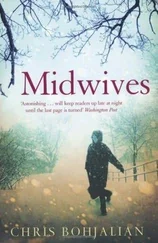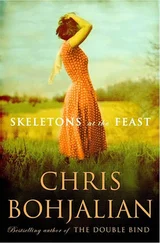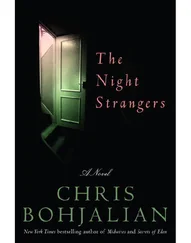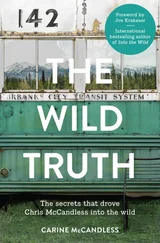What we did find, however, were a variety of clues that Alice Hayward had been receiving more than mere pastoral counsel from that minister who’d fled Haverill hours after conducting her funeral service.
AFTER I READ the autopsy report for the first time, I rang David Dennison. He was expecting the call.
“I had a feeling the word pending would pique your interest,” he said.
“Are you just trying to make my caseload completely suck? The Hayward mess wasn’t supposed to have any effing complications.”
“Has anyone told you that you have the mouth of a teenager?”
“Teenagers don’t say effing . No censorship there. And Paul says I sound more like a sailor, thank you very much. And he spends his life around teenagers: I think if I sounded like one, he would have told me by now.”
“So what do you think?”
“I think it all seemed so simple when we were at the house that day.”
“It did look nice and neat.”
I glimpsed once more the photos of Alice Hayward that had been taken at the scene. Her eyes, starved for air, were bulging, the whites dotted with burst blood vessels, and her mouth was forever fixed in a rictus of agony and fear. “No it didn’t, David. It looked horrible.”
“You know what I mean,” he said, his voice not really defensive. Then he shared with me his suspicions about what might in fact have occurred, given the way portions of George Hayward’s brain were sprinkled liberally across the wall and the couch. When he was done, he added, “And I expect more serious questions when we get back the blood and urine work in another week or two.”
“What do you think the lab will find?”
“That George Hayward was too drunk to kill himself. This is all preliminary, of course, but I wouldn’t be surprised if as many as four hours separated the two deaths.”
“You’re kidding.”
“Good God, did you count the beer bottles?”
“I did.”
“The guy smelled like a frat basement on a Saturday morning.”
“I tried to avoid fraternity basements, thank you very much.”
“And his dinner was all but digested. Mush. Hers? I could have counted the string beans and peas. So here’s one scenario. He strangles her around eight or eight-thirty. Then, filled with remorse or panic, he drinks. Well, drinks some more. A lot more. And finally he passes out. Then, around midnight, someone shoots him.”
“Sounds a little far-fetched.”
“Wait till we have the blood-alcohol numbers. I wouldn’t be surprised if we’re talking the neighborhood of point-three or more. Alcohol poisoning. I wouldn’t be surprised if it turns out he was flirting with lethal.”
“But you can’t be that precise on the times of death. Plus or minus two hours, they both could have died around ten,” I said.
“Possible. But gastric emptying time is about four hours. People lie, but stomachs don’t. Assuming they ate dinner together-say, seven or seven-fifteen-she’s dead before eight-thirty. Him? Could be closer to midnight.”
“Of course, if Hayward was that drunk, it’s also possible that he didn’t kill Alice, either.”
“Well, yes,” he agreed, and I didn’t have to verbalize what both of us were thinking. Sometimes none of us has the slightest idea what really goes on in a house when the shades are drawn and the doors are closed. There are the postmortem realities-how a body decomposes or cools to room temperature, how it stiffens or putrefies or lets loose with one last bowel movement-but what that body was doing in the moments before it died is often unfathomable. And, in the case of a homicide, often freakish and weird. There might have been things going on in that Cape that were emphatically beyond our wildest conjectures and people passing through whose presence would have astonished the neighbors.
And passing through with the Haywards’ welcome complicity: There had been no indications of forced entry at the house on the hill. The doors were unlocked, and the windows-though filled with screens-were open.
Yet we did know this: George Hayward would beat the living crap out of his wife when the spirit moved him. That pastor had said so, that pal named Ginny had said so, and the couple’s one kid, the teenage girl, had said so. And this meant that whoever had killed the one or the both of them had been aware of George Hayward’s nasty little hobby. When we found Alice’s body, her rear end and lower back were flecked with two-and three-day-old contusions and welts, which meant that George had beaten her the weekend she was baptized. David said her kidneys were so badly bruised that she’d probably been peeing blood on the day that she died.
“Had she had sex that day?” I asked. “Consenting or otherwise?”
“No indications. No semen in the vagina.”
“Well. At least it isn’t a rape.”
“Small consolation when you’ve been strangled.”
“True.”
“And I do think George murdered Alice.”
“You do?”
“Absolutely. His skin was under her fingernails. Those are her scratch marks on the left side of his face.”
“Well, then,” I said, “I think I should send an investigator to Haverill, don’t you? I think I should have someone go shake some trees.”
“I agree.”
A few days later, we would all be wondering where the pastor had gone and why he wasn’t answering his cell phone.
JIM HAAS HAD been the state’s attorney for the county before I arrived, and my sense was that he would be the state’s attorney after I had moved on. He was no longer the prodigy he’d been ten years ago, when, in his mid-thirties, he had rooted out the drug dealers from Albany and the Bronx who were snaking their way into the county high schools, and convicted the Arlington novelist who had murdered his wife and tried to make it appear as if it had been a random home robbery and slaying. I had just arrived after working for two years in the prosecutor’s office in Concord, New Hampshire, and I had been impressed as hell with Jim’s first accomplishment. But the second? Oh, please. I can count on one hand the number of women in northern New England who were killed in my lifetime in random home robberies. We all know women are often murdered by the men who profess to love them the most. But Jim really enjoyed leading our small office and mentoring younger lawyers like me, and he savored the strange currents that seemed to waft through Bennington and southwestern Vermont. We had our extremely funky, always-a-little-goth college just outside the city; there was that great New England world-weariness that comes from being a mill town that no longer has a whole lot of industry-which made us a bit like Pittsfield and Albany, our urban neighbors across the state lines; and there was the reality that we were surrounded by iconic little Green Mountain hamlets filled with longtime locals and second-home interlopers from Manhattan, Westchester, and Fairfield County.
When I went by Jim’s office to brief him on the Hayward case, the mayor had just left and I could tell that Jim was basking in the reality that the mayor had come here rather than expecting Jim to come to him. I considered reminding him that Mayor Peter Grafton liked meeting the people at the Blue Benn Diner while chowing down on the corned beef hash, and our office was between the Blue Benn and his. Peter had probably met with Jim on his way into town and still had egg on his breath.
That morning Jim was wearing the sort of microfiber blazer that looks very good on razor-thin male models but was stretched a bit like Saran Wrap on a guy as stocky as Jim. He isn’t overweight-he’s actually pretty handsome, with clear green eyes that I’ve seen him use to great effect on female jurors and a mane of dark brown hair that has only recently started to thin-but if I were to guess, I’d say he carried around close to 220 pounds on a frame of roughly six feet.
Читать дальше











